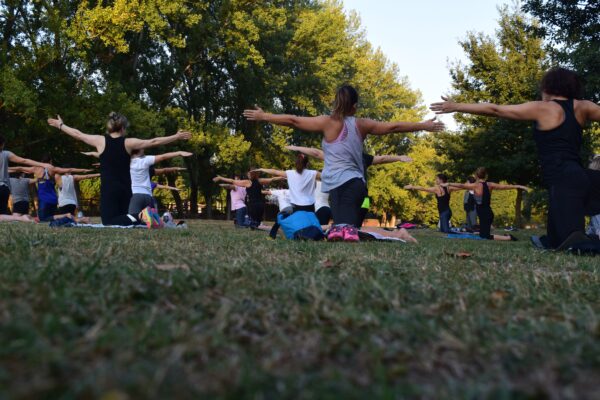By John Paul de Guzman
Corporate Fitness
“Sport has the power to change the world. It has the power to inspire. It has the power to unite people in a way that little else does. Sport can awaken hope where there was previously despair.”
– Nelson Mandela
These are inspiring words from the late Nelson Mandela, who was a firm believer that sport was one of the things that could break down racial barriers and unite us all. This year has already been an exciting one for the world of sports with the Sochi 2014 Winter Olympics in February and the anticipation of the FIFA World Cup beginning in June. Globally, not only do these events promote sports as a form of entertainment, it raises awareness of the importance of physical activity and sports for a healthy lifestyle. If a healthy lifestyle begins at youth, then it will carry on into adulthood.
The World Health Organization (WHO) suggests that physical activity should not be mistaken for sport. Instead, sport is one of the forms of physical activity along with play, transportation, chores, recreation, physical education, or exercise. Physical activity can be performed anywhere and does not always require equipment (Myths about physical, 2014). For children and youth age 5-17, the American Council on Exercise (ACE) recommends for them to participate in moderate to vigorous physical activity at least 60 minutes per day or 150 minutes per week (C. Bryant & D. Green (Eds.), 2010). Moreover, physical activity greater than 60 minutes is even more beneficial. Children are naturally full of energy, but are today’s children and youth active? Are they fit?
According to the Centers for Disease Control and Prevention (CDC), childhood obesity has more than doubled in children and quadrupled in adolescents in the past 30 years. Childhood obesity has both immediate and long-term effects on health and well-being. Immediate health effects in obese youth include higher risk factors for cardiovascular disease, pre-diabetes, bone and joint problems, sleep apnea, and social and psychological problems. In addition, long-term effects include heart disease, type 2 diabetes, stroke, cancer, and osteoarthritis. Around the world physical activity levels are decreasing among sedentary children and youth (e.g.; watching excessive television, playing video games, etc.). In a study performed by the International Olympic Committee (IOC), they observed the correlation between fitness levels and blood pressure in youth and found that physical activity intervention can effectively reduce blood pressure in youth with hypertension (Mountjoy, 2011). Thus, teaching kids healthy lifestyle habits can lower their risks for future health problems.
It is important to understand that children and youth grow and mature at different rates, but independent of their fitness levels, all children and youth benefit from regular physical activity (C. Bryant & D. Green (Eds.), 2010). Regular physical activity promotes the development of musculoskeletal tissues, a healthy cardiovascular system, neuromuscular awareness, and maintenance of a healthy body weight (Mountjoy, 2011). Furthermore, the adolescent years can be a vulnerable time period during maturation. Given that, regular physical activity has been associated with psychological benefits by providing opportunities to build self-esteem and social skills which can also assist in boosting academic performance and preventing the development of other unhealthy habits such as substance abuse.
As one can see, by making it our goal to teach children and youth to develop healthy lifestyle habits, such as participating in regular exercise and its benefits, the byproduct will be their healthy future, which is vital for all populations.
References
Exercise and special populations. In (2010). C. Bryant & D. Green (Eds.), ACE Personal Trainer
Manual (Fourth ed., pp. 518-520). San Diego: American Council on Exercise (ACE).
Mountjoy, M. (2011). Consensus statement on the health and fitness of young people through
physical activity and sport. In Br J Sports Med.. Lausanne: International Olympic Committe.
Retrieved from
http://www.olympic.org/Documents/Commissions_PDFfiles/Medical_commission/Fitness
_Health_Consensus_statement.pdf
Myths about physical activity. In (2014). Global Strategy on Diet, Physical Activity and Health.
World Health Organization. Retrieved from
http://www.who.int/dietphysicalactivity/factsheet_myths/en/
Physical activity and young people. In (2014). Global Strategy on Diet, Physical Activity and
Health. World Health Organization. Retrieved from
http://www.who.int/dietphysicalactivity/factsheet_young_people/en/
John’s Bio
John Paul de Guzman received his Bachelor of Science degree in Kinesiology from San Francisco State University and is a certified American Council on Exercise (ACE) personal trainer. Outside of the corporate fitness environment, he has worked as an assistant coach for the Nike Women’s Marathon and Brooks Running San Francisco Rock ‘N’ Roll marathon series training programs. An avid runner, he hopes to participate in his fourth marathon this fall in the Bank of America 2014 Chicago Marathon.




